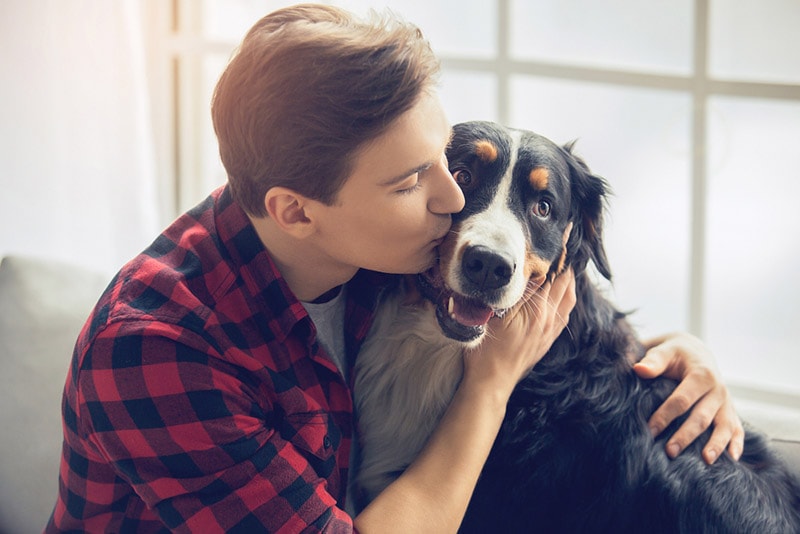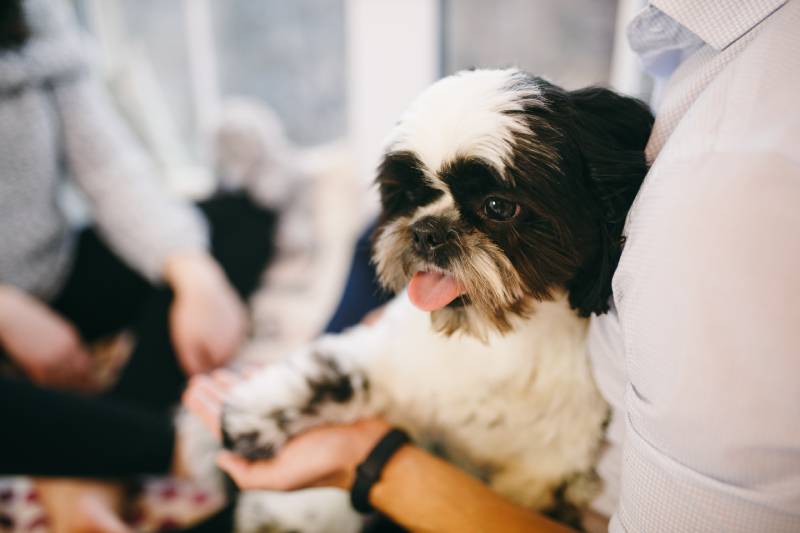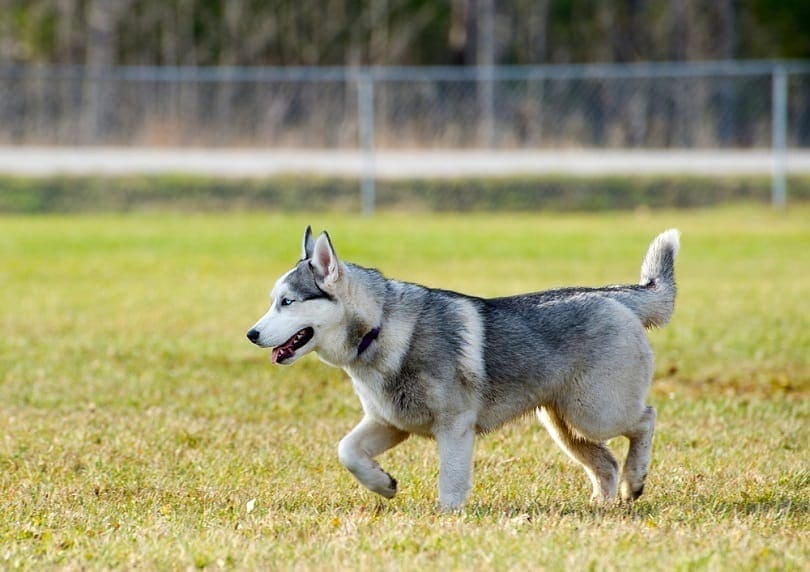What Were Bulldogs Bred For? History Explained

Updated on
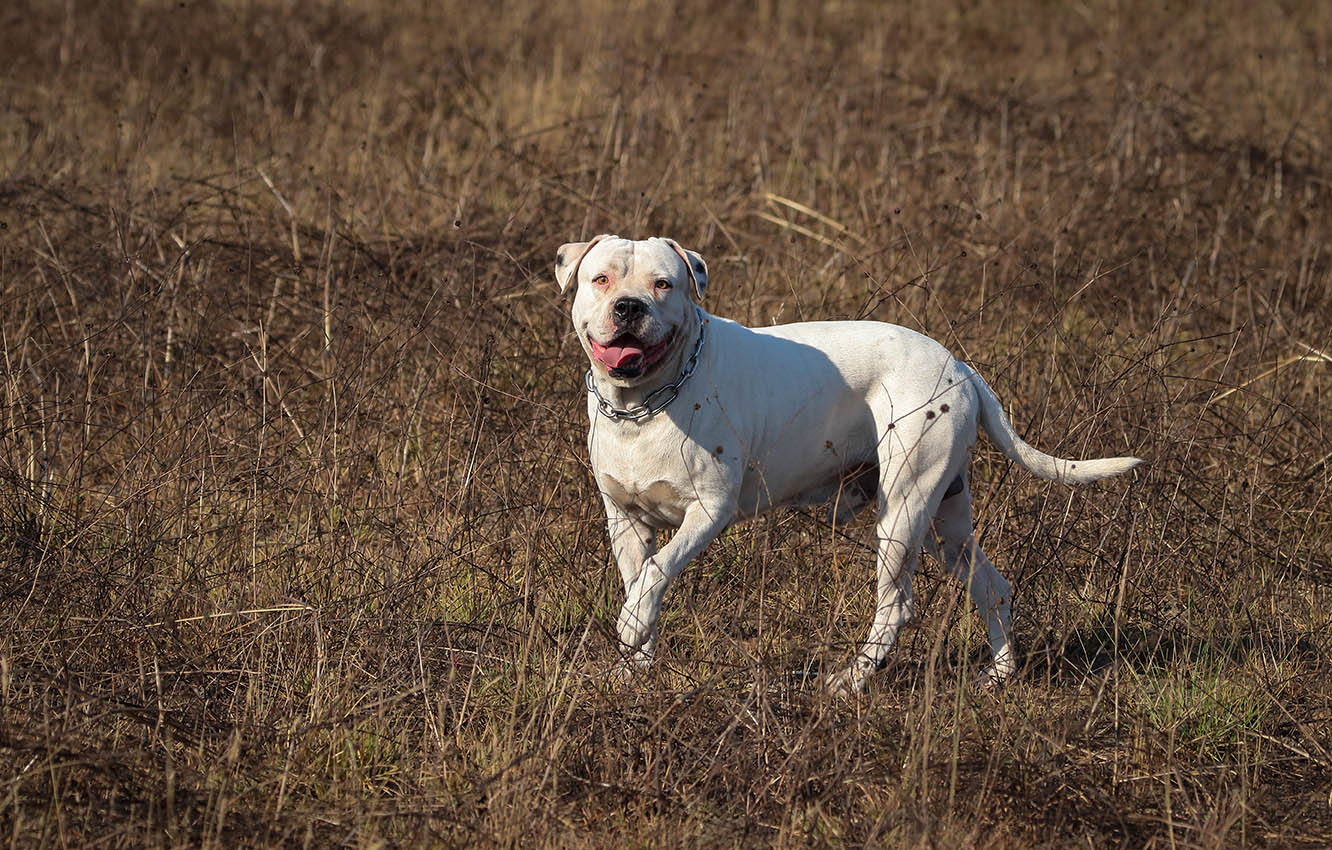
Bulldogs are one of the most popular dog breeds in the world. People love them for their big, goofy personalities and adorable faces. But what many people don’t know is that Bulldogs were bred for a specific purpose—to fight bulls.
Bulldogs have been used as fighting dogs for centuries, and their muscular build and aggressive nature make them the perfect breed for the job. Bulldogs were developed specifically for bull-baiting, a blood sport where one or more bulls were tied to a post and dogs were set loose on them. Bulldogs were thought to be the best at this because of their large heads and powerful jaws. The popularity of bull-baiting led to the breeding of more and more Bulldogs, which is how they eventually became a symbol of the United Kingdom.
While bull-baiting is now illegal in many countries, Bulldogs remain a popular breed for pet owners and dog lovers. Read on to find out all about their amazing history as working dogs and pets.
What Was Bull-Baiting?
In the past, bull-baiting was a popular blood sport that involved baiting bulls with dogs. It is generally believed that the sport originated in the British Isles in the 12th century, but it was popular all across medieval Europe. The sport involved tying a bull to a post and inciting a dog or dogs to attack it. When the bull gored and trampled the dogs, it would often result in a bloody and dangerous spectacle. This was a barbaric sport that consisted of tormenting bulls and dogs for entertainment.
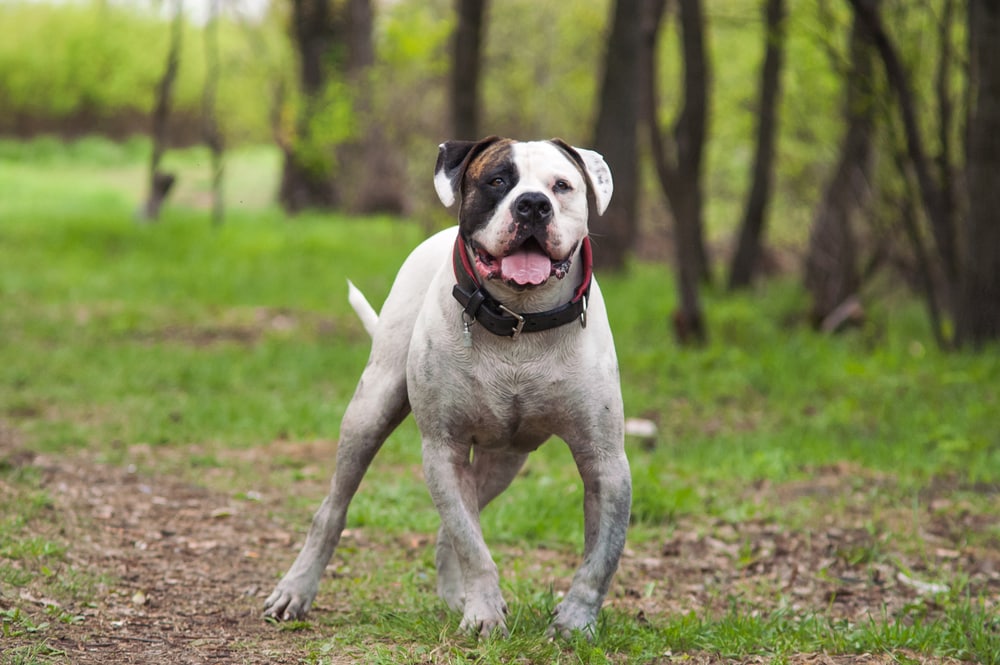
What Dogs Were Bred for Bull-Baiting?
Among other dogs, the extinct Old English Bulldog breed, extinct Bullenbeissers, the Spanish Alano, and bull and terriers were specifically bred to bait bulls and bears. The breeds of dogs that were bred for bull-baiting were typically medium-large and muscular. They were bred to be both aggressive and fearless and to have a strong bite.
What Were Old English Bulldogs Like?
Old English Bulldogs were compact, broad, and muscular, with an average height of 15 inches and a weight of 45 pounds. Old English Bulldogs are known to have descended from ancient war dogs like the old Mastiff and the extinct Alaunt dog. A French breed of mastiff, known as the “Alant de Boucherie,” contributed to the development of fighting and baiting dogs in France. These dogs are called the original Bulldogs since they controlled and defended herds of cattle.
Using selective breeding, Old English Bulldogs were bred over generations for their temperament and physical characteristics. They were prized for their aggression, tenacity, strength, and unflagging courage. In old prints, the Old English Bulldog variety is depicted as a smaller Mastiff with a relatively long head.
What Happened During Bull-Baiting?
Firstly, pepper was blown into the bull’s nose to enrage it before it was baited. Bulls were usually placed in a hole in the ground, a collar and rope were often used to hobble the bull, and they were sometimes tethered to iron stakes so that they could only move within a limited radius. In this sport, the dogs were responsible for immobilizing the bulls.
Contemporaneous accounts say that the dogs would attempt to flatten themselves to the ground, crawling as close as possible to the bull, and then dart out and try to bite the bull on the head or nose. The bull was baited for about an hour at a time, and in all the same bull might be baited for 4 hours in a single day. The tactic of pinning the bull was a variation of bull-baiting, where specially trained dogs would attack the bull one by one, and after a successful attack, the dog would attach its teeth to the bull’s snout.
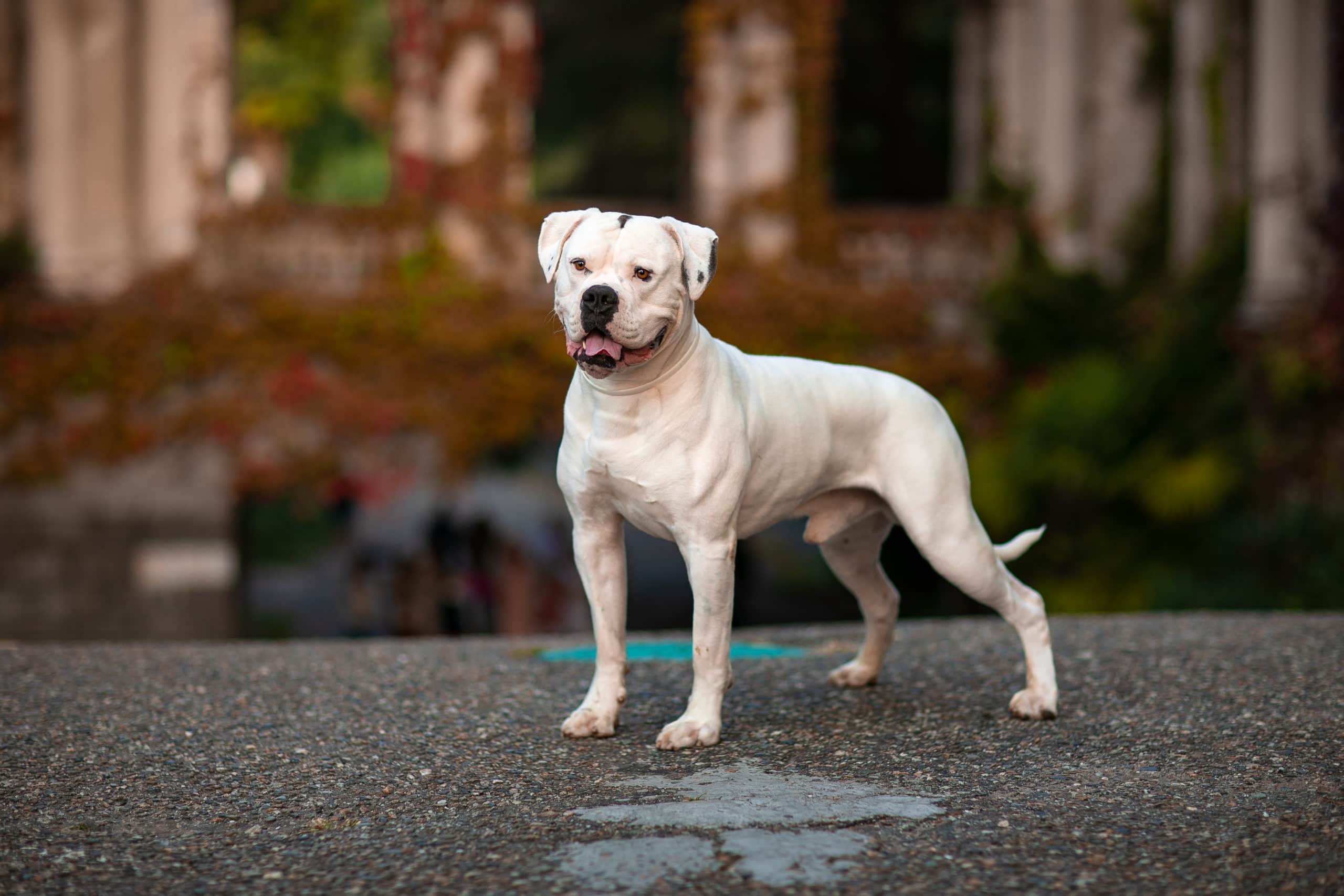
What Was the Impact of Bull Baiting on Dogs?
Whenever the dog darted at the bull, the bull tried to catch the dog with his head and horns and throw it into the air. It was not always the case that dogs died during the baiting, but the bull often ripped their sides open. When this happened, the dogs’ were eviscerated. Whenever the dog darted at the bull, the bull tried to catch the dog with his head and horns and throw it into the air. As a consequence of the bull’s counterattack, it was common for the dogs to lose a leg in the fight. Sometimes, they may have lost two or three legs.
How Many Dogs Baited the Bull at One Time?
The number of dogs involved varied greatly between competitions, however, it was generally accepted that the more dogs involved, the higher the likelihood of success for the dogs. It was not uncommon to see 20–30 dogs biting and tearing at the same bull at any one time. In general, bulls are afraid of dogs and will hesitate when confronted by a pack. This meant a group of dogs had more opportunities to attack.
How Widespread Was Bull-Baiting at its Height?
Animal blood sports were among the most popular entertainments in 16th and 17th century England. A number of purpose-built arenas were located in the gritty Bankside district of London. By the early 18th century, bull-baiting was practiced twice a week in London at Hockley-in-the-Hole. It was also fairly common in provincial towns, such as Birmingham’s Bull Ring which attracted many blood sports fans.
When Was Bull-Baiting Outlawed?
The sport began to die out early in the 19th century, due in part to a public nuisance caused by the baiting and to new concerns about animal cruelty. This was a cruel and barbaric practice that caused immense pain and suffering to the bull. Bull-baiting came to be seen as a brutal and inhuman sport, and it was eventually banned. The Cruelty to Animals Act of 1835 outlawed bull-baiting and other blood sports such as bear-baiting and cock-fighting in the United Kingdom. This law prohibited the keeping of any house, pit, or any other place for baiting or fighting bulls, bears, dogs, or other animals.
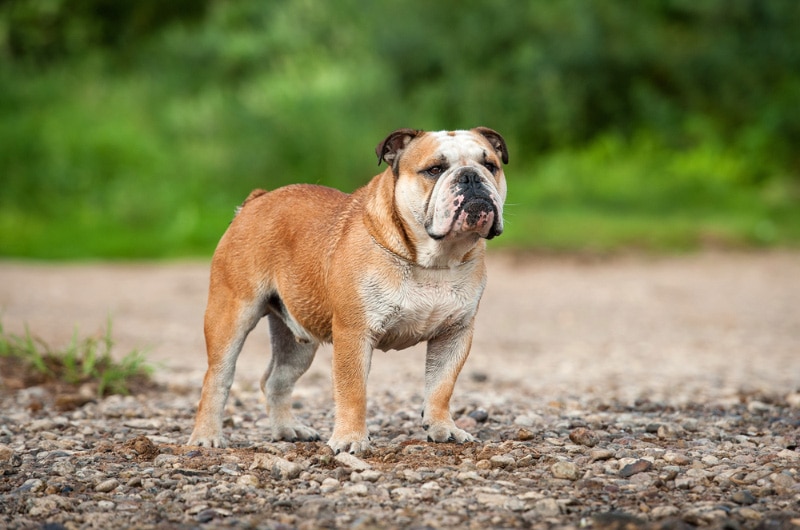
What Happened to the Old English Bulldog After Bull-Baiting Was Outlawed?
With the sudden end of bull-baiting, the Bulldog’s primary job was wiped out, and the dogs rapidly began to decline in numbers. In 1865, dog fanciers began forming clubs to breed dogs, which culminated in the creation of the modern English Bulldog from remnants of the blood-sport-era Old English Bulldogs.
When Was the Modern Bulldog Breed Standardized?
The Kennel Club was founded in 1873 and was the first dog breeding club in the world to register purebred dogs and dog breeds. Bulldogs were a part of the movement to standardize dog breeds from the very beginning. The first volume of the Kennel Club Stud Book, published in 1874, included the first male English Bulldog registered, a dog named Adam.
Are Today’s Bulldogs the Same Breed That Was Used for Bull-Baiting Centuries Ago?
The English Bulldog of today is not the same breed that was used for bull-baiting centuries ago. The original Old English Bulldog was ideal for setting loose on a chained bull because it was a stocky, aggressive dog with a powerful muzzle and jaws. Today’s Bulldogs may look tough, but they cannot perform the tasks for which their ancestors were designed. They are not able to endure the strain of running after and being thrown by a bull, and their muzzles are too short and weak to grip and tear. Besides being physically less capable, modern Bulldogs also possess a calmer temperament due to decreased levels of aggression.
How Similar Are Modern Bulldogs & Old English Bulldogs?
There is some debate over how similar modern Bulldogs were to Old English Bulldogs in actuality. Some people argue that the two breeds are quite similar, while others claim that there are significant differences between them. In general, however, it is agreed that both Bulldogs and the extinct Old English Bulldogs shared a sturdy, muscular body type with short muzzles and a characteristic underbite.
Their relative health is likely to be one of the major differences between them. Old English Bulldogs were fast-running, fit, powerful animals. Modern Bulldogs are prone to a number of health conditions, including hip dysplasia, elbow dysplasia, and heart disease. They also have a higher incidence of cancer than other breeds of dogs. Bulldogs typically require a lot of attention when it comes to their health, and should see a veterinarian regularly for routine checkups.
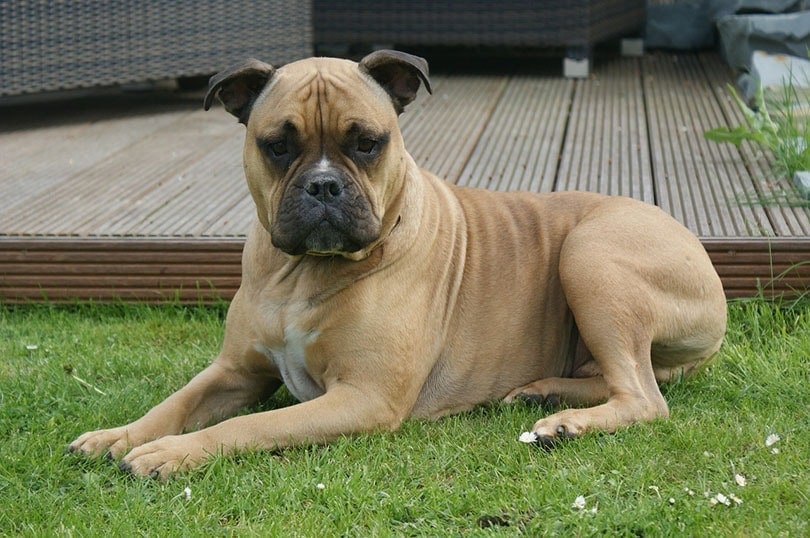
Given Their Ancestry, Are Bulldogs Dangerous?
There is no definitive answer to this question given the complexities of genetics and the myriad of variables that contribute to an individual animal’s temperament. However, it is generally accepted that purebred Bulldogs are not as aggressive as some other breeds, such as Pit Bulls or Rottweilers. Although Bulldogs are descended from an aggressive ancestor, Bulldogs are not dangerous because of their ancestry. While they may have been bred for combat in the past, the modern Bulldog is a friendly and docile pet.
Bulldogs are not inherently aggressive, and with proper socialization, they can make great family pets. However, like any dog breed, Bulldogs can be dangerous if they are not properly trained and raised. With responsible ownership, proper training, and loving care, however, Bulldogs can be gentle, affectionate, and wonderful family members.
Do Modern Bulldogs Still Try to Attack Cattle?
Generally speaking, the modern Bulldog does not try to attack cattle as its ancestor did, as Bulldogs are no longer used in this way. However, the answer to this question depends on the individual dog and the circumstances surrounding the situation. Some modern Bulldogs may still attempt to attack cattle if they are provoked or feel threatened, while others may be more inclined to simply observe them from a distance. It is important to remember that Bulldogs were originally bred as working dogs, and so some may still have an innate desire to herd or protect livestock.
Conclusion
In conclusion, Bulldogs were originally bred for bull-baiting and dogfighting. Nowadays, they are known for their friendly nature, but they can also be quite protective of their families and homes. Bulldogs make great pets and are perfect for those looking for a less energetic dog. However, modern Bulldogs do suffer from a significant number of health issues. If you’re interested in getting a Bulldog, be sure to do your research to find a reputable breeder.
See Also:
Featured Image Credit: R.M.T, Shutterstock


